The Maryhill Museum located near Goldendale, Washington, has a display of Plateau stone artifacts. The Plateau Culture Area is the area between the Cascade Mountains and the Rocky Mountains in Washington, Oregon, Idaho, British Columbia, and Western Montana. From north to south it runs from the Fraser River in the north to the Blue Mountains in the south. Much of the area is classified as semi-arid. Part of it is mountainous with pine forests in the higher elevations.
While much of the Plateau Culture Area constitutes a dry region characterized by a sagebrush-Juniper steppe area with pine forests at the higher levels, there are portions of the area which do not fit this description. In the northern portion of the Plateau Culture Area, there is a temperate rainforest with higher precipitation.
 The shaded area on the map shown above designates the Plateau Culture Area.
The shaded area on the map shown above designates the Plateau Culture Area.
With regard to prehistory, the Museum display states:
“Our view of pre-historic cultures is limited by the type of materials which can survive through time. Stone artifacts are dominant in archaeological sites simply because they remain long after wood, fabric, basketry, and animal skins have rotted away.”
The last ice age reached its maximum in North America about 15,000 years ago, and while the climate in the Plateau area remained cold, the glacial ice sheets began to retreat north. The archaeological record shows that by about 13,000 years ago, ancestral American Indians, called Paleoindians by some archaeologists, were living in this region.
Mortars
Plateau people lived by gathering, fishing, and hunting. Using stone mortars, they would grind dried roots into flour. Smaller mortars appear to have been used to grind up paint pigments. According to the display:
“Mineral deposits of iron (red or yellow) and copper (blue-green) were used for coloring leather and for body painting. Small mortars might also have been used for grinding tobacco or medical plants.”
With regard to archaeological evidence of paint at the Lind Coulee site in Washington (dated at about 10,600 BCE), Ruth Kirk and Richard Daugherty, in their book Archaeology in Washington, write:
“They suggest an ancient sense of beauty or ritual: the ocher might have been used to paint faces, clothing, or tools or for rock art.”
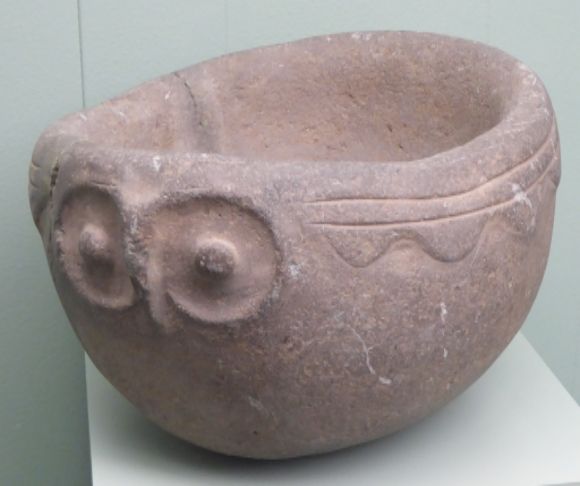 Some of the large mortars, such as the one shown above, were carved into animal shapes.
Some of the large mortars, such as the one shown above, were carved into animal shapes. 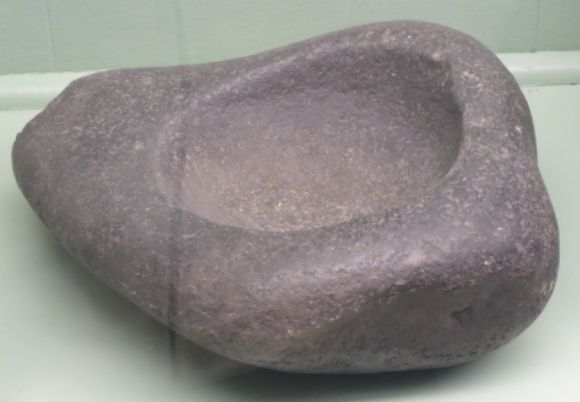
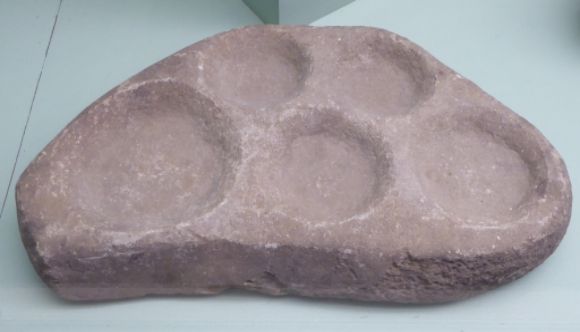
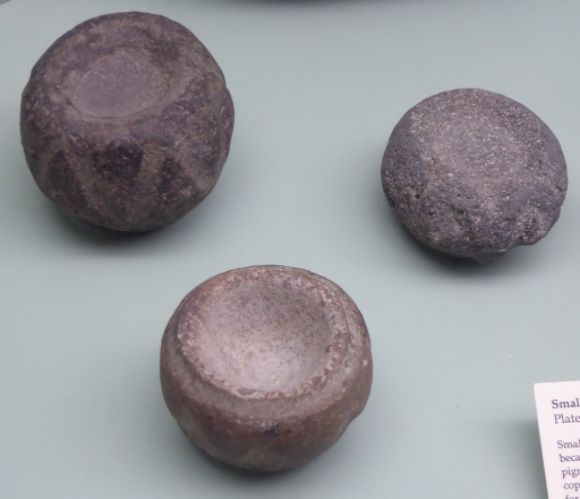
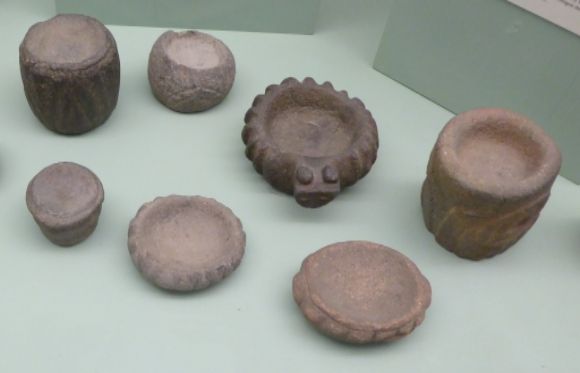
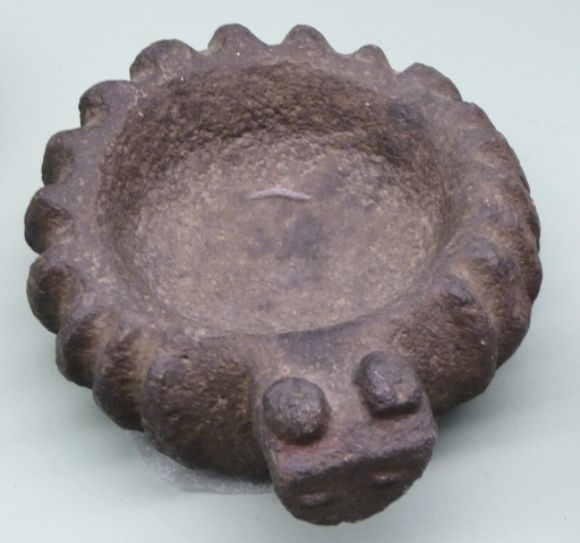
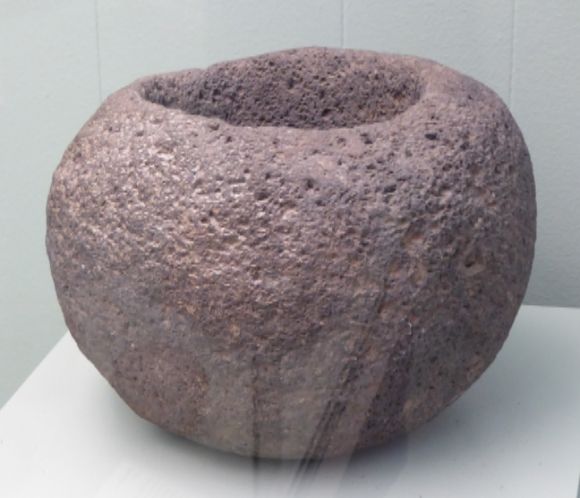
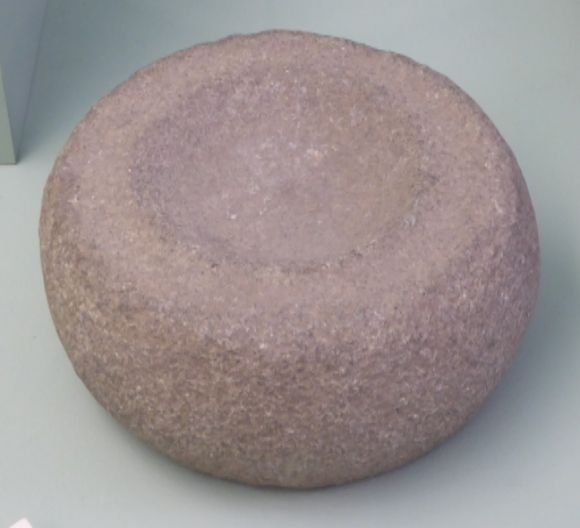

Pestles
Pestles were used with mortars to grind up food. Some pestles were finished decoratively with a carved head.
Mauls
Mauls are basically hammers. Most mauls were fairly simple, but some had human faces, animal heads, or rounded projections carved on the end of the handle.
Abraders
Abraders were made from slabs of gritty volcanic stone and were used for shaping, sharpening, and smoothing of stone, bone, antler, shell, and wood.
Arrow Straighteners
The shaft of an arrow needs to be fairly straight so that it will fly accurately. Arrow shafts would be pulled along a straightening stone to make them smooth and straight. Some straighteners were a single stone with one or more grooves, while others were made from two stones.
Anchor Stones
Fishing was important to the Indian people in the Plateau area. Anchor stones were used to hold down the ends of a fish net.
Tubular Pipes
Tobacco was smoked in small tubular pipes, such as those shown below. Some pipes were incised with decorations.

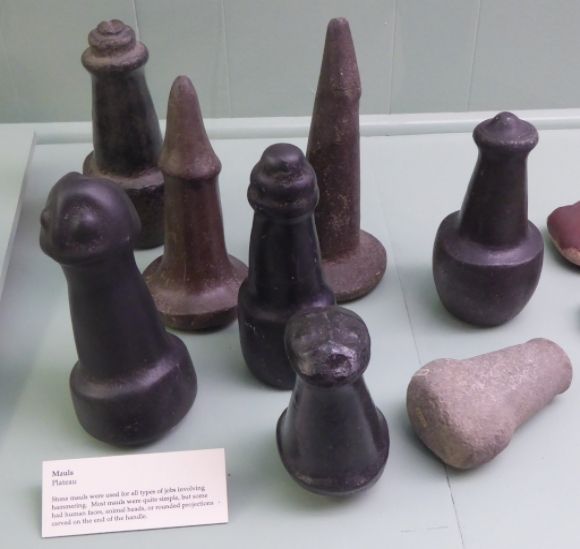
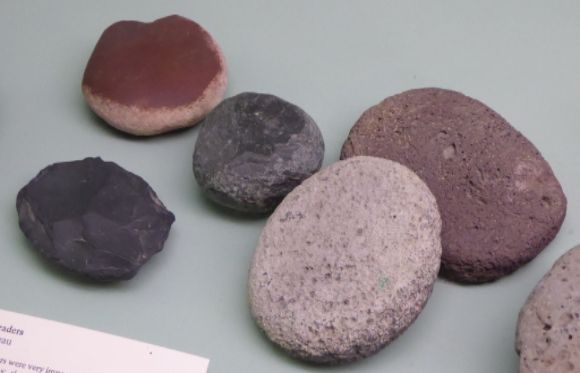

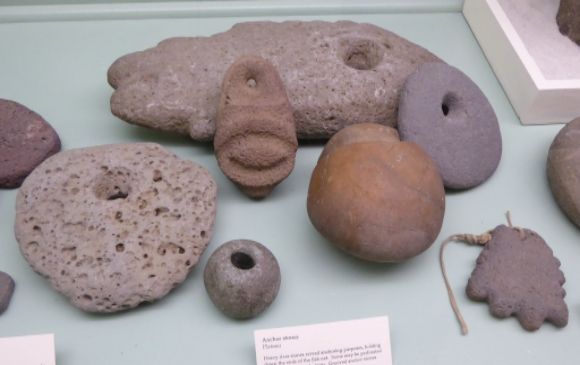
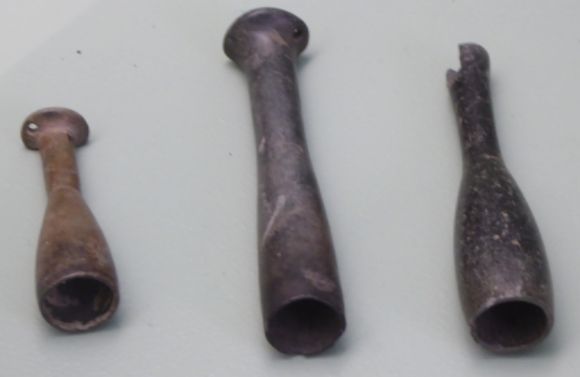
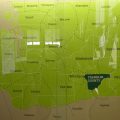
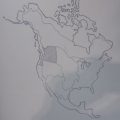
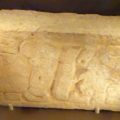
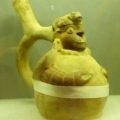
Leave a Reply